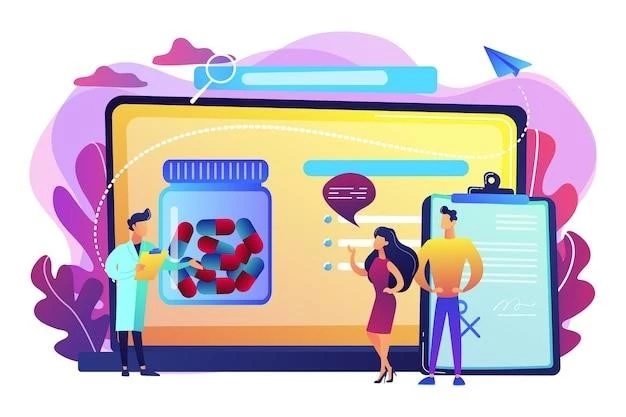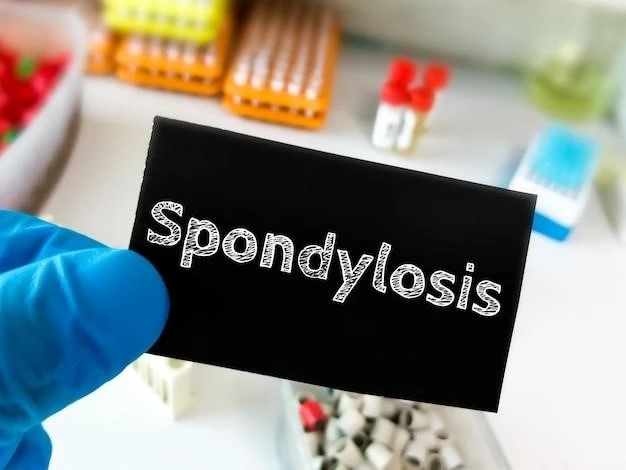Epididymitis Disease
Epididymitis is a condition characterized by inflammation of the epididymis, causing pain, swelling, and discomfort in the scrotum. This article aims to provide a comprehensive overview of epididymitis, including its causes, symptoms, diagnosis, treatment options, complications, preventive measures, and its impact on daily life.
Introduction to Epididymitis
Epididymitis is a common medical condition involving inflammation of the epididymis, a coiled tube located at the back of the testicle responsible for storing and transporting sperm. The inflammation can result from various factors such as bacterial infections, urinary tract infections, sexually transmitted infections, or trauma. It typically presents with symptoms like pain and swelling in the scrotum, fever, and discomfort during ejaculation. Prompt diagnosis and appropriate treatment, often including antibiotics, are crucial to manage epididymitis effectively and prevent complications. Understanding the anatomy, causes, symptoms, and treatment options for epididymitis is essential to promote awareness and early intervention for individuals at risk of developing this condition.
Understanding the Anatomy of the Testicle and Epididymis
The testicle is a vital male reproductive organ responsible for producing sperm and testosterone. It is situated within the scrotum, a sac of skin that houses the testes. Adjacent to the testicle lies the epididymis, a tightly coiled tube connecting the testicle to the vas deferens. The epididymis plays a crucial role in sperm maturation and storage before ejaculation. Understanding the intricate anatomy of the testicle and epididymis is essential in comprehending the pathophysiology of epididymitis and its impact on male reproductive health. Any disruption in the normal function of these structures can lead to conditions like epididymitis, highlighting the importance of anatomical knowledge in diagnosing and managing reproductive disorders.
Causes of Epididymitis
Epididymitis can be caused by various factors, with the most common being bacterial infections. These infections can result from sexually transmitted diseases, urinary tract infections, or other sources of bacterial invasion. Additionally, non-bacterial causes such as trauma, medications, or structural abnormalities can also lead to epididymitis. Understanding the diverse etiology of this condition is crucial in determining the appropriate treatment approach. Timely identification of the underlying cause through medical history, physical examination, and diagnostic tests is essential for effective management and prevention of recurrent episodes of epididymitis. Addressing the root cause of epididymitis is key to alleviating symptoms and reducing the risk of complications associated with this inflammatory condition.
Symptoms of Epididymitis
Epididymitis manifests with several characteristic symptoms, including pain, swelling, and inflammation in the scrotum. Individuals may experience discomfort during ejaculation, along with a persistent fever and urinary symptoms such as pain or burning during urination. The affected area might feel warm to the touch, and the skin over the scrotum may appear reddened. Prompt recognition of these signs is critical for timely diagnosis and initiation of appropriate treatment. Understanding the spectrum of symptoms associated with epididymitis enables healthcare providers to differentiate it from other conditions affecting the male reproductive system, ensuring a comprehensive and accurate diagnostic process.
Diagnosis of Epididymitis
Diagnosing epididymitis involves a thorough medical evaluation that includes a detailed medical history, physical examination, and specific diagnostic tests. Healthcare providers may perform blood tests to check for signs of infection, including elevated white blood cell count and inflammatory markers. Urine analysis can help identify any urinary tract involvement. Imaging studies such as ultrasound may be used to visualize the epididymis and rule out other conditions like testicular torsion. Additionally, in some cases, urethral swabs or cultures may be collected to identify the causative bacteria. A comprehensive diagnostic approach enables accurate identification of epididymitis and guides the selection of appropriate treatment strategies tailored to the individual’s needs.
Treatment Options for Epididymitis
The management of epididymitis typically involves a combination of antibiotic therapy, pain management, and supportive measures. Antibiotics are prescribed based on the suspected or identified cause of the infection, often targeting bacterial pathogens. Pain relief medications such as nonsteroidal anti-inflammatory drugs (NSAIDs) may be used to alleviate discomfort and reduce inflammation. Supporting the scrotum with a supportive undergarment and applying cold packs can help relieve swelling and pain. In severe cases or when complications arise, hospitalization and intravenous antibiotic therapy may be necessary. Close monitoring of symptoms and follow-up care are essential to ensure the effectiveness of treatment and prevent recurrence of epididymitis.
Complications Associated with Epididymitis
Untreated or poorly managed epididymitis can lead to various complications, including the spread of infection to the testicle (epididymo-orchitis) or abscess formation. Chronic epididymitis may result in scarring and obstruction of the epididymal duct, leading to fertility issues. In rare cases, severe infections can cause systemic complications such as sepsis. Additionally, recurrent episodes of epididymitis may impact the quality of life and psychological well-being of affected individuals. Recognizing and addressing complications promptly through appropriate treatment and follow-up care is essential to prevent long-term consequences and ensure optimal outcomes for individuals with epididymitis.

Preventive Measures for Epididymitis
Preventing epididymitis involves practicing safe sexual behaviors, including consistent and correct condom use, limiting sexual partners, and seeking regular STI screenings. Maintaining good hygiene practices, such as regular washing of the genital area, can help reduce the risk of bacterial infections. Avoiding trauma to the scrotum and prompt treatment of urinary tract infections can also lower the likelihood of developing epididymitis. Individuals with a history of recurrent epididymitis may benefit from long-term antibiotic prophylaxis under medical supervision. Educating individuals about preventive measures is crucial in minimizing the occurrence of this inflammatory condition and promoting male reproductive health.
Relationship Between Epididymitis and Sexual Health
Epididymitis can have implications for sexual health due to its association with sexually transmitted infections. Individuals with epididymitis may experience discomfort and pain during sexual activity, affecting their overall sexual wellbeing. Furthermore, the infectious nature of some causes of epididymitis raises concerns about transmission to sexual partners. Addressing epididymitis involves not only treating the infection but also promoting open communication about sexual health practices and safe sex behaviors. Encouraging regular STI testing, partner notification, and mutual support are vital components in managing epididymitis within the context of sexual health and fostering healthy relationships.
Recurrence of Epididymitis
Recurrence of epididymitis can occur in some individuals, particularly if the underlying cause is not effectively treated or predisposing factors are not addressed. Factors contributing to recurrent episodes include incomplete resolution of infection, antibiotic resistance, anatomical abnormalities, or untreated sexual partners with infections. Proper diagnosis, tailored treatment plans, and adherence to prescribed medications are crucial in preventing the recurrence of epididymitis. Addressing predisposing factors, such as urinary tract abnormalities or chronic prostatitis, can also play a role in reducing the likelihood of repeated infections. Close monitoring and follow-up care are essential in managing recurrent epididymitis effectively and improving long-term outcomes.
Differentiating Epididymitis from Other Conditions
Accurate diagnosis of epididymitis requires differentiation from other conditions that can present with similar symptoms, such as testicular torsion, torsion of the appendix testis, or inguinal hernias. Testicular torsion, a surgical emergency, presents with sudden, severe testicular pain and requires immediate intervention to prevent testicular damage. Torsion of the appendix testis and epididymitis may share symptoms but have different etiologies. Inguinal hernias can cause scrotal swelling and discomfort but are not typically associated with urinary symptoms or systemic signs of infection. Utilizing clinical judgment, laboratory tests, and imaging studies can aid in distinguishing epididymitis from these conditions and guide appropriate management strategies.
Impact of Epididymitis on Daily Life
Epididymitis can significantly impact daily life, causing pain, discomfort, and emotional distress. Individuals affected by epididymitis may experience limitations in daily activities, work productivity, and sexual relationships due to the symptoms associated with the condition. The physical discomfort and psychological burden of managing a chronic or recurrent condition like epididymitis can affect quality of life and overall well-being. Appropriate management strategies, including timely diagnosis, effective treatment, and support from healthcare providers, are essential in minimizing the impact of epididymitis on daily life. Educating patients about coping mechanisms and lifestyle adjustments can help individuals navigate the challenges posed by epididymitis and improve their daily functioning.
Research and Emerging Trends in Epididymitis Management
Ongoing research in epididymitis management focuses on optimizing treatment strategies, exploring novel therapeutic approaches, and identifying factors contributing to recurrent infections. Emerging trends include the use of targeted antibiotic therapy based on bacterial susceptibility testing, minimally invasive procedures for abscess drainage, and immunomodulatory therapies to reduce inflammation. Studies are also investigating the role of probiotics in preventing recurrent epididymitis by restoring the natural flora and enhancing immune responses. Advancements in imaging techniques, such as contrast-enhanced ultrasound, offer improved visualization of epididymal inflammation. Collaborative efforts between researchers and healthcare professionals continue to drive innovation in epididymitis management, aiming to enhance patient outcomes and reduce the burden of this inflammatory condition.
Conclusion
In conclusion, epididymitis is a common inflammatory condition that can significantly impact male reproductive health. Prompt diagnosis, appropriate treatment with antibiotics, and preventive measures are essential in managing epididymitis and reducing the risk of complications. Understanding the relationship between epididymitis and sexual health, as well as the factors contributing to recurrence, is crucial in providing comprehensive care to individuals affected by this condition. Continued research and emerging trends in epididymitis management offer promising approaches to optimize treatment outcomes and enhance patient well-being. By emphasizing prevention, timely intervention, and holistic patient care, healthcare providers can alleviate the burden of epididymitis and promote male reproductive health.
